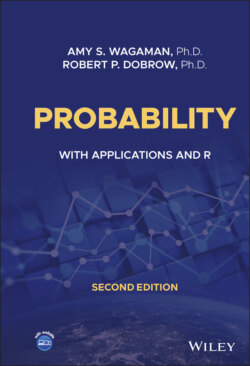Читать книгу Probability - Robert P. Dobrow - Страница 33
Perfect Bridge Hands
ОглавлениеAccording to the BBC News [2003], on January 27, 1998, in a whist club in Bucklesham, England, four card players at a table were dealt perfect bridge hands.
“Witnesses in the village hall where the game was being played,” reported the BBC, “have confirmed what happened. Eighty-seven-year-old Hilda Golding was the first to pick up her hand. She was dealt 13 clubs in the pack…. Hazel Ruffles had all the diamonds. Alison Chivers held the hearts….”
“Chivers insists that the cards were shuffled properly. ‘It was an ordinary pack of cards,’ she said.”
Another report of a perfect bridge hand appeared in The Herald of Sharon, Pa., on August 16, 2010.
An article in 2011 (https://aperiodical.com/2011/12/four-perfect-hands-an-event-never-seen-before-right/) reported several instances of perfect bridge hands being dealt starting in 1929.
Do you think these reports are plausible?
Example 1.26 In 20 coin tosses, what is the probability of getting exactly 10 heads?Here is a purely counting approach. There are possible coin tosses. Of those, there are sequences of H's and T's with exactly 10 H's. The desired probability isA slightly different approach first counts the number of possible outcomes and then computes the probability of each. There are possible outcomes. By independence, each outcome occurs with probability . This gives the same result.
Example 1.27 A DNA strand can be considered a sequence of As, Cs, Gs, and Ts. Positions on the DNA sequence are called sites. Assume that the letters at each site on a DNA strand are equally likely and independent of other sites (a simplifying assumption that is not true with actual DNA). Suppose we want to find (i) the probability that a DNA strand of length 20 is made up of 4 As and 16 Gs and (ii) the probability that a DNA strand of length 20 is made up of 4 As, 5 Gs, 3 Ts, and 8 Cs.
1 There are binary sequences of length 20 with 4 As and 16 Gs. By independence, each sequence occurs with probability . The desired probability is
2 Consider the positions of the letters. There are choices for the positions of the As. This leaves 16 positions for the Gs. There are choices for those. Of the remaining 11 positions, there are positions for the Ts. And the last eight positions are fixed for the Cs. This givesThis last expression is an example of a multinomial probability, discussed in Chapter 5.
Binomial theorem. The classic binomial theorem describes the algebraic expansion of powers of a polynomial with two terms. The algebraic proof uses induction and is somewhat technical. Here is a combinatorial proof.
